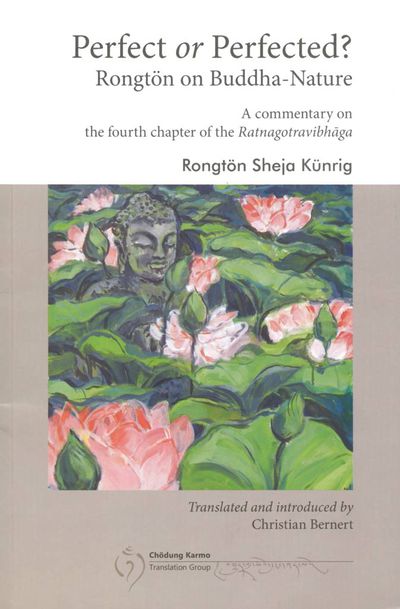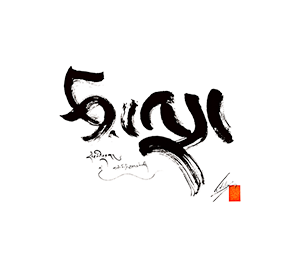- Forewordvii
- Preface and Acknowledgmentsix
- I - Translator's Introduction: The Doctrine of Buddha-nature1
- Overview1
- Sources4
- The Sutras4
- The Sastras8
- The Ratnagotravibhaga11
- The Text of the Ratnagotravibhaga11
- The Question of the Authorship of the Ratnagotravibhaga12
- The Ratnagotravibhaga in India13
- The Ratnagotravibhaga in Tibet15
- The Analytical School of Loden Sherab15
- The Meditative School of Tsen Khaboche19
- Previous Studies and the Aim of the Present work20
- Rongton and His Presentation of Buddha-nature22
- A Brief Biography of Rongton Sheja Kiinrig22
- Rongton's Presentation of Buddha-nature23
- Introduction23
- The Buddha Qualities and the Dharmakaya26
- The Dhatu as a Cause28
- The Gotra and the Luminous Nature of the Mind29
- Rongton and the Ratnagotravibhagavyakhya33
- Summary34
- Notes on the Translation35
- II - Translation: An Extensive Exposition of the Dhatu: All Sentient Beings Have Buddha-Nature37
- Determining the Dhatu by Means of a Tenfold Presentation44
- Essential nature and cause44
- Result and function50
- Connection62
- Manifestation65
- States67
- All-pervasiveness69
- Immutability71
- Inseparable qualities97
- Summary106
- Appendix: Detailed Outline of the Commentary107
- Glossary113
- Tibetan Names and Places125
- Bibliography129
- Index137
Perfect or Perfected? Rongtön on Buddha-Nature
As the most important canonical treatise on Buddha-nature, the Ratnagotravibhaga (also known as Uttaratantrasastra, Tib. rgyud bla ma) established the doctrinal foundations for the Mahayana philosophy of tathāgatagarbha, the doctrine according to which all sentient beings are either inherently buddhas or endowed with the potential for awakening. Among the most prominent Tibetan commentaries on this text figures that of the Sakya master Rongtön Sheja Künrig, a prolific writer who was active during the golden age of Tibetan Buddhist philosophy. Refuting, on one hand, the notion that Buddha-nature is synonymous with mere emptiness, and on the other that the mind is inherently endowed with the Buddha qualities, Rongtön argues for an understanding of Buddha-nature that embraces both aspects of the nature of mind: cognizance and emptiness.
Rongtön Sheja Künrig (1376-1449) figures among the greatest teachers of the Sakya tradition. Particularly renowned for his commentaries on the Five Treatises of Maitreya, his vast erudition, and extensive teaching career made him one of the most influential masters for the scholastic lineages of all schools of Tibetan Buddhism. This volume contains an annotated translation of Rongtön Chenpo’s commentary on the central chapter of this treatise (including the relevant stanzas of the root text), along with an extensive introduction to the historical development of this doctrine and an analysis of Rongtön’s position. (Source: Vajra Publications)
| Citation | Bernert, Christian, trans. Perfect or Perfected? Rongtön on Buddha-Nature: A Commentary on the Fourth Chapter of the Ratnagotravibhāga (vv.1.27-95[a]). By Rongtön Sheja Künrig (rong ston shes bya kun rig). Kathmandu: Vajra Books, 2018. |
|---|---|
This commentary is a key source for teaching buddha-nature and the Gyü Lama in the Sakya tradition and was authored by the famous Sakya master Rongtön Sheja Kunrik. The book is an updated version of Bernert's dissertation, which includes an annotated translation of Rongtön's commentary on the fourth chapter of the Gyü Lama (Ratnagotravibhāga) and an analysis of Rongtön's position, which is a useful starting point for understanding the view of buddha-nature teachings from a Sakya perspective. Rongtön's view of buddha-nature follows the analytical tradition of Ngok Loden Sherab, but is somewhat complex, and Bernert does a good job of presenting the complexities in his analysis.
Rongtön Sheja Künrig (རོང་སྟོན་ཤེས་བྱ་ཀུན་རིག་ rong ston shes bya kun rig). Erudite Commentary on the Treatise of the Sublime Continuum of the Mahayana (ཐེག་པ་ཆེན་པོ་རྒྱུད་བླ་མའི་བསྟན་བཅོས་ལེགས་པར་བཤད་པ་ theg pa chen po rgyud bla ma'i bstan bcos legs par bshad pa). Three editions were used by the translator for this book:
- G: Theg pa chen po rgyud bla ma'i bstan bcos legs par bshad pa. A detailed exegesis of the Uttaratantraśāstra (Ratnagotravibhāga) by Roṅ-ston Śes-bya-kun-rig. Reproduced from a rare manuscript from Jakhar Tshang. Gantok, 1979. This is a manuscript of ninety-six folios (192 pages) written in dbu med script.
- LS: Theg pa chen po rgyud bla ma'i bstan bcos legs par bshad pa bzhugs so. In Rong ston bka' 'bum, vol. JA. Skye gdu mod: Gangs ljong rig rgyan gsung rab par khang, 2004. A modern printed edition of 100 folios (199 pages).

- K: Theg pa chen po rgyud bla ma'i bstan bcos legs par bshad pa bzhugs so. In Theg pa chen po rgyud bla ma'i bstan bcos rtsal 'grel bzhugs so. Khreng tu'u (Chengdu): Si khron mi rigs dpe skrun khang, 1995. A book in wesstern format including a concise account of Maitreya's career, the root verses of the Ratnagotravibhaga, Rongtön's commentary, and its outline.



